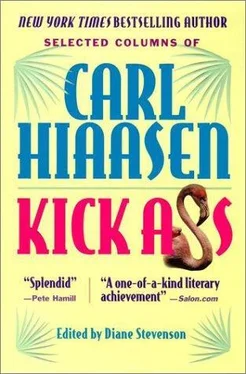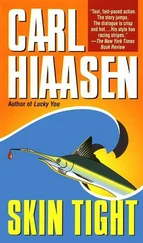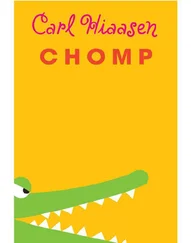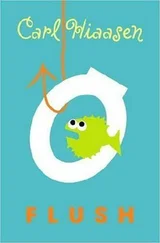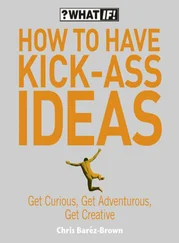Now another sport is sucking precious dollars out of the county coffer: golf. So far, unsuspecting taxpayers have forked out $8.9 million on the Golf Club of Miami. That's not a typo: $8.9 million—with about $8 million more to come.
Even using silk flags and the lushest Bermuda grass, it hardly seems possible to spend so much to spruce up a few fairways.
Here's what happened. Five years ago, the county contracted with the PGA Tour to rejuvenate the Golf Club of Miami in North Dade. The courses had gotten ratty, and worried neighbors voted to tax themselves to purchase much of the property. The county had the rest.
The PGA Tour eagerly offered to run the place and touted itself as capable and experienced. The prestige of attaching the Tour's name was supposed to attract a luxury hotel and hordes of golf-crazy tourists.
As it turned out, a bunch of chimpanzees couldn't have negotiated a worse contract than the one approved by Metro commissioners. Ironically, the only one opposed to it was then-Mayor Steve Clark, the county's undisputed authority on all golfing matters. Clark said the Golf Club of Miami deal was no good, and he was right.
Oh, the courses are in better shape today, and they're finally making a modest profit. Unfortunately, the county's seeing little of it; $500,000 annually comes off the top, for the PGA.
How bad was the contract? Item: new cart paths. The Tour's price tag: $558,000, or about three times the going rate. The Caddyshack Commission said sure. Since 1989, the Golf Club of Miami has drained a small fortune from the county's general fund, including $863,000 a year in bond payments. We're stuck with those until 2004.
Of course, the big luxury hotel never materialized, costing Metro another $4.2 million in bed taxes to repay investors. Incredibly, the Parks Department also "loaned" the golf club $4. i million to construct a third course, an executive-style par 62. Not only was the price higher than many first-class par 725, but the short course lost a tidy $460,000 in its first two years.
The county claims all of that money eventually will be paid back out of future revenues from the golf club. Sure. When they raise the greens fees to $2,000 a day.
In addition to the $8.9 million in general funds, the Golf Club of Miami has received much more from other public sources. Metro commissioners grabbed $3.5 million from the sports-franchise bed tax and built a new clubhouse dedicated to one of their own, Sherman Winn. His name on the building is a fitting reminder of the suckers who paid for it.
Defending the project, county officials say the funds spent on the Golf Club of Miami aren't a total waste. Said one: "At least we've gotten into public ownership three pretty nice golf courses."
And a dandy bargain it is. Let's see … 54 holes at a minimum final cost of $24.6 million. That comes to about $455,555 per fairway.
From now on, golfers will have an option of replacing their divots, or listing them with Century 21.
Wayne skating on thin ice of fan loyalty
July 23, 1995
Wayne Huizenga says he's moving or selling the Florida Panthers if somebody doesn't build him a new arena. Gonna get the puck out, he says.
The announcement came at a press conference during which a testy Huizenga expressed no fondness for Broward officials, who'd rejected a tax on tourists or restaurants to finance a new $ 165 million hockey rink.
Instead, the county had rashly suggested that Mr. Blockbuster himself should pony up a heftier chunk of the arena money—an option no self-respecting sports tycoon likes to contemplate.
The common philosophy is that sports fans should be so darned grateful to have a big-league franchise that they ought to subsidize it with taxes.
It's not enough to pay for overpriced parking, overpriced tickets, overpriced junk food and overpriced souvenirs. No, you should pay for the overpriced facilities, too.
Happens all over. That's how St. Louis lured the Rams from Los Angeles: new stadium, sweet deal. For many owners it's proved a successful extortion: Build me a new place to play, or I'll take my team elsewhere.
When the ungrateful citizenry of Broward balked at bankrolling a hockey stadium, Huizenga stomped off. Even if the county comes crawling back, he declared, the deal's off.
So there. Nah, nah, nah.
Huizenga says he needs help because the team is losing $1 million a month by sharing the Miami Arena with the Heat. He wants a new ice palace tiered with posh, high-priced skyboxes.
Not so long ago, politicians would've bellied across broken glass to appease Huizenga. The mood today is slightly less worshipful, and the reason is simple. Voters are tired of using public monies to enrich millionaire sports owners.
South Floridians have contributed heavily, if not knowingly, to the downtown arena, as well as a private Grand Prix track and a tennis stadium. It's welfare for the rich, disguised as civic boosterism.
Huizenga's grim account of the Panthers' finances is troubling. Here's a team (unlike other local franchises) that plays to 97 percent capacity, yet still manages to bleed red ink. That's quite a trick.
How did such a sharp businessman fall into such a stinky deal? Clearly, Huizenga agreed to share the arena only because he was sure he'd be getting a new one soon, courtesy of some hockey-crazed municipality. Unfortunately, he misjudged.
His assertion that more luxury skyboxes will save the Panthers is equally suspect, considering that the relatively few skyboxes in the Miami Arena aren't sold out.
One positive thing to come from Huizenga's tantrum is a possible partnership with Heat owner Micky Arisen, also in the market for a new venue. Together, they've got more capital to invest, and a better chance of turning a profit.
A similar joint deal worked well in Chicago. There, the basketball and hockey teams split both the cost and revenues from the new $175 million United Center. Both teams are making money.
But here's the real shocker: The Chicago arena was constructed largely with private funds. The owners, not taxpayers, picked up the tab. What a radical concept.
Unfortunately, building a new arena here would kill the old one, which isn't that old and wasn't so cheap. It would be better if Huizenga and Arisen joined forces (and bankers) to refurbish the current Miami Arena in the high style they desire.
Right now, the most valuable part of the Panthers franchise is fan loyalty, but that can change quickly. An owner's ultimatum for luxury skyboxes cuts no ice with the folks in the cheap seats.
Let Broward have its arena—and the debt
February 1, 1996
Dade taxpayers should breathe a collective sigh of relief this week. They might be off the hook for a new sports arena.
Broward County has impulsively offered to build a basketball-hockey emporium to keep both the restless Miami Heat and the money-losing Florida Panthers in South Florida.
Price tag: $212 million, minimum. Most of the dough would come from a 2 percent hotel-bed tax, backed by county bonds.
Broward voters haven't been asked for their opinion, as a public outpouring of skepticism might discourage Heat owner Micky Arisen (who has already threatened to move his team) and Panthers owner Wayne Huizenga (who's supposedly trying to sell his).
By a 5—1 vote, Broward commissioners vowed to spring for a new arena if the teams sign in advance and agree to share revenues with the county. The deal is far from sealed, and Dade officials are hurriedly polishing a new pitch of their own.
Only in the irrational realm of big-league sports can two of the richest guys on the planet sit back and watch suckers plead for the privilege of building them a palace.
In Broward, three cities have hurled themselves worshipfully at Arisen's and Huizenga's feet. Fort Lauderdale has a downtown site off Interstate 95. Pompano Beach is pushing a parcel near the harness track. And Sunrise has property located near West Broward 's social and cultural shrine, the Sawgrass Mills outlet mall.
Читать дальше
